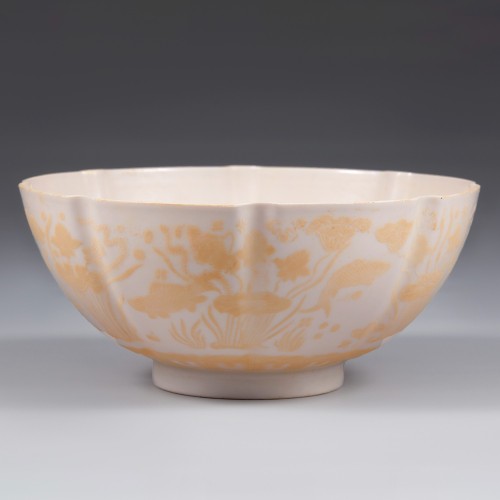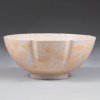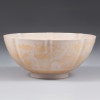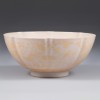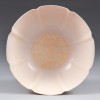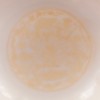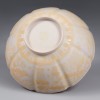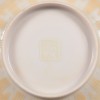본문
작품 정보
구연 여덟 곳에 홈이 있어 국화 모양을 이루는 완입니다.
내면과 외면에는 연잎과 해초, 물풀 사이를 한가로이 헤엄치는 잉어와 쏘가리가 묘사되어 있습니다.
연꽃과 잉어가 함께하는 도안은 소원성취를 의미하며, 잉어는 ‘입신출세의 관문’을 뜻하는 '등용문'을 의미합니다.
이는 중국 후한의 역사를 다룬 <후한서>에 처음 등장한 말로, 잉어가 거센 중국 황하강을 거슬러 올라가 상류에 있는 용문(龍門)을 통과하면 용이 된다는 전설에서 비롯된 말입니다.
이 유물은 성화 황실의 애장품으로 추정됩니다.
굽 바닥에 이 유물이 명나라 성화 시기의 것임을 알려주는 '대명성화년제(大明成化年製)' 관지가 쓰여 있습니다.
━━━━━
碗呈八瓣菊花式。
内外描绘鲤鱼、鳜鱼在荷叶、海藻、水草间悠闲游动。
莲花和鲤鱼图案象征愿望的实现,鲤鱼象征“事业进步”,即登龙门。
该表述最早出现在记载中国后汉历史的《后汉书》中。
传说一条鲤鱼逆流而上,穿过了上游的龙门,就变成了一条龙。
据推测,该作品是成化帝时期的珍贵物品。
底足署“大明成化年制”款识,可知该作品为明朝成化时期。
━━━━━
This bowl features eight lobes along the rim, forming the shape of a chrysanthemum.
On both the interior and exterior surfaces, motifs of carp and perch swimming leisurely among lotus leaves, seaweed, and aquatic plants are depicted.
The combination of lotus flowers and carp symbolizes the fulfillment of wishes, while the carp represents success in life, specifically passing the "Gateway to Success," known as the 'Dragon Gate' (登龍門).
The term originates from the Houhanshu (後漢書), a historical text from the Later Han dynasty, which narrates a legend that carp swimming upstream through the turbulent Yellow River and leaping over the Dragon Gate (龍門) would transform into dragons.
This artifact is believed to have been a cherished possession of the Chenghua imperial court.
The base of the dish bears the reign mark "大明成化年製" (Made in the Chenghua Period of the Great Ming Dynasty), confirming its origin from the Ming dynasty's Chenghua era.
CONDITION
NOTICE
상담/문의 : 02- 730-5601 / 02- 730-7566 